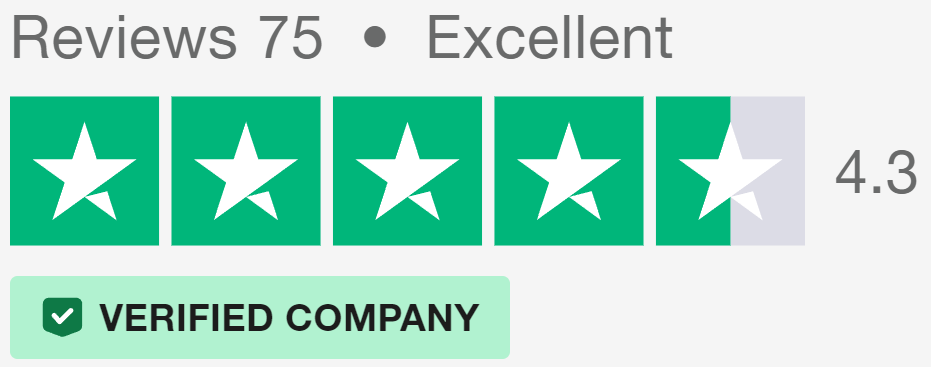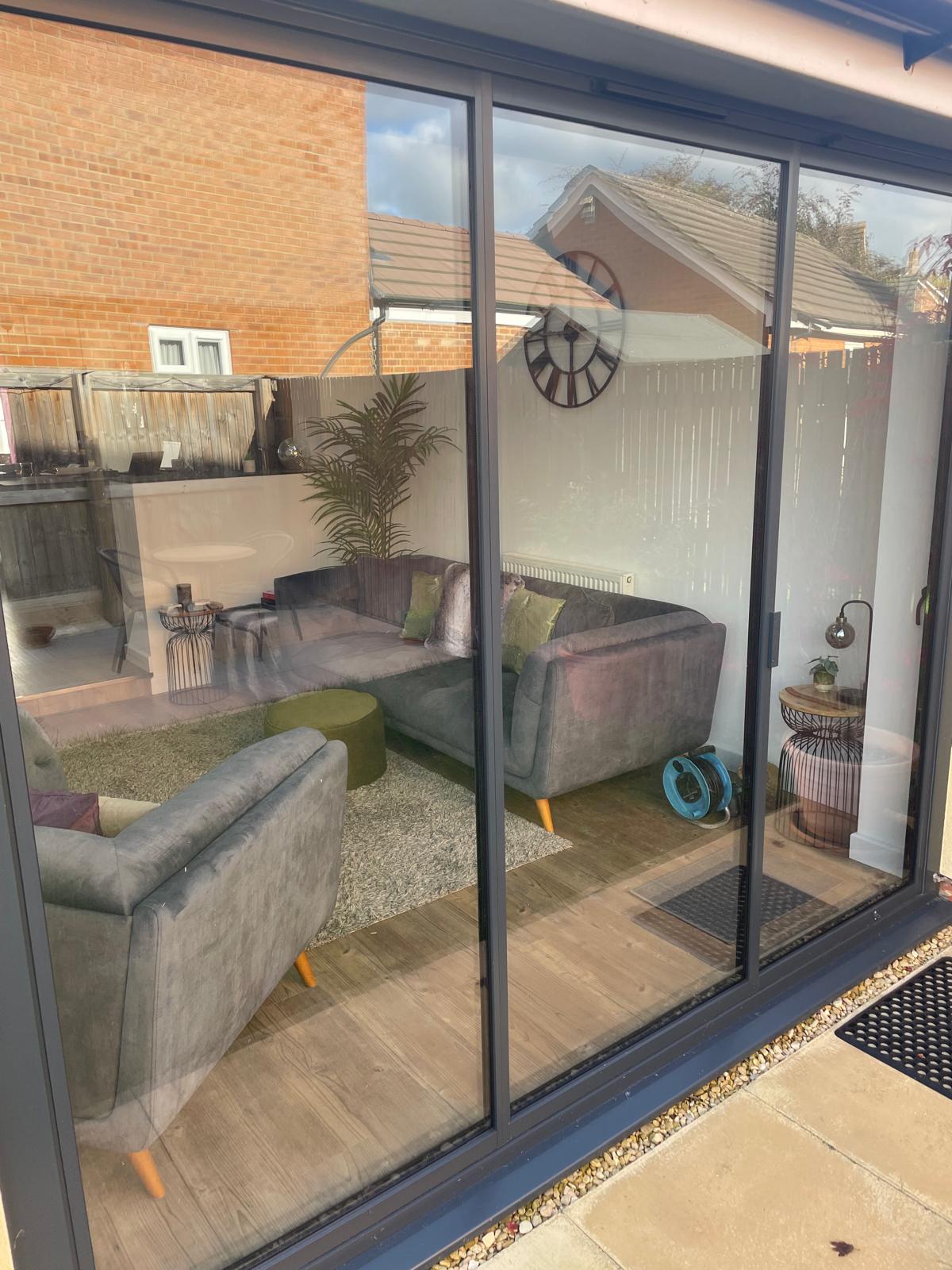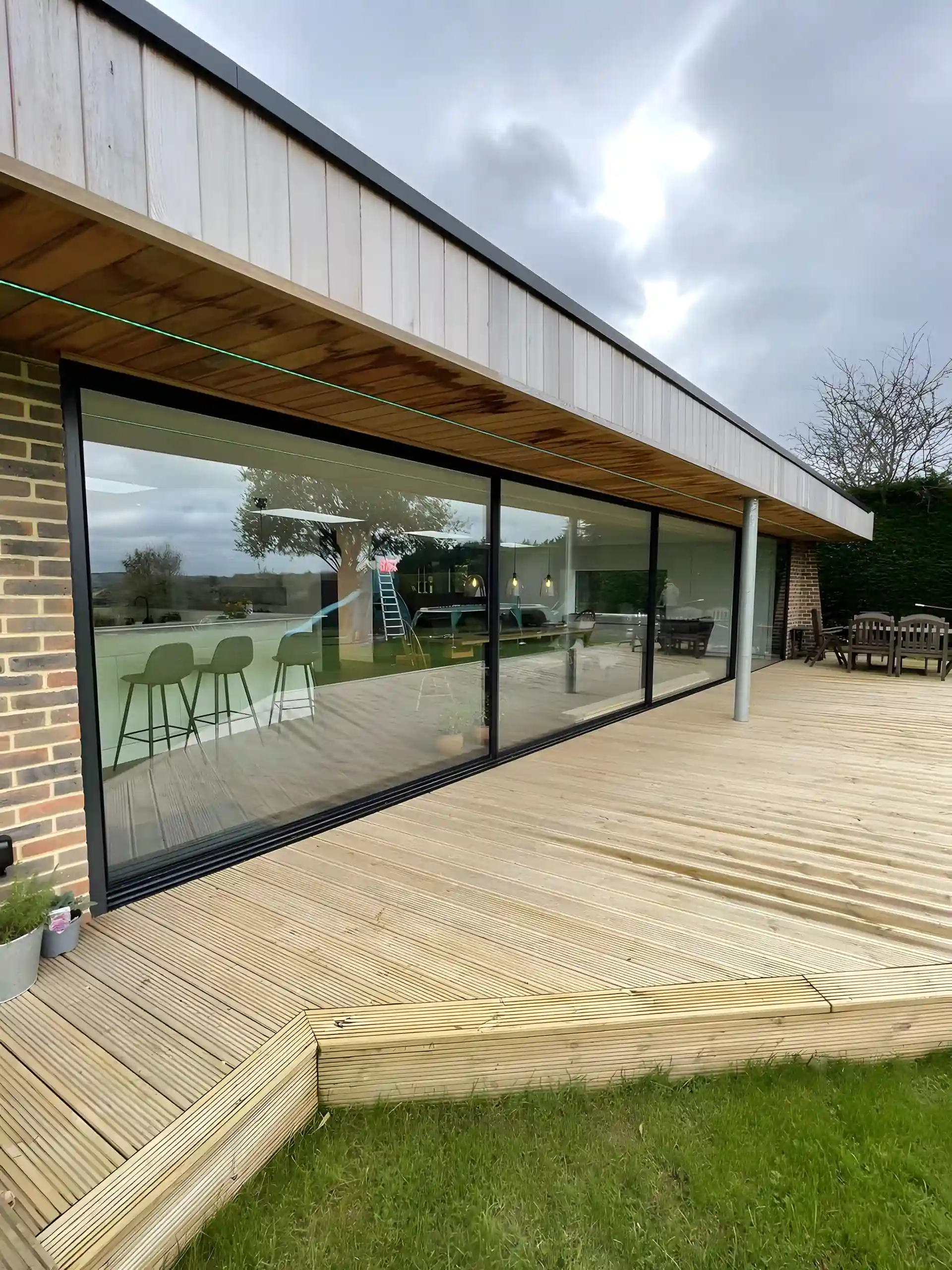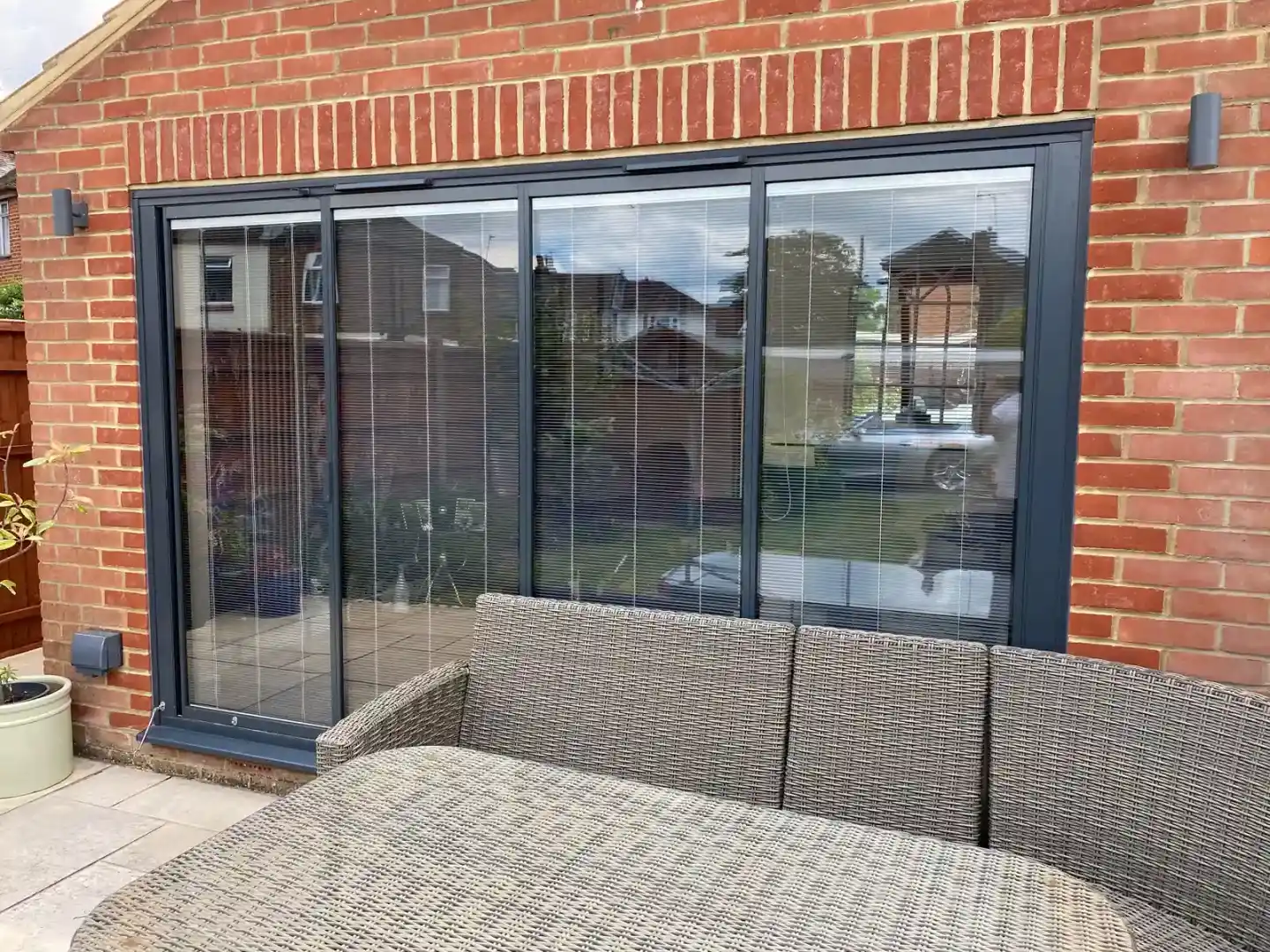Energy Efficient Patio Doors: Homeowner’s Guide
Table of Contents

Patio Door Types for Energy Efficiency
Energy efficient patio doors come in several styles, each affecting your home’s warmth and comfort differently. While many people focus solely on glass when thinking about thermal performance, the overall design plays a major role in preventing heat loss and keeping energy bills down.

Energy Ratings by Door Style
Energy efficient sliding doors often provide better thermal performance than their alternatives. The simple track system creates fewer gaps where cold air might enter, while the large glass panels let in plenty of winter sun. Energy efficient patio doors need double weather seals along their tracks, blocking drafts more effectively than hinged designs.
Bifolding energy efficient patio doors require careful design to match the thermal performance of sliders. Each panel join creates a potential weak point where heat can escape, though modern gaskets and weatherstripping help combat this issue. The higher frame-to-glass ratio in bifolds means less solar gain during winter months, but advanced thermal breaks in the frames help offset this drawback.
Frame-to-Glass Ratios
Energy efficient patio doors with a higher glass-to-frame ratio typically deliver better thermal performance. More glass means better heat retention, provided you’re using quality glazing. Sliding doors excel here, with their minimal frames allowing for larger glass panels that trap heat more effectively when the sun’s out.
Advanced Glass Technology
Modern energy efficient patio doors rely heavily on sophisticated glazing technology to keep homes warm. Glass innovation has moved far beyond basic double glazing, with new coatings and gases that work together to block heat transfer.
Double and Triple Glazing Comparison
Double glazed patio doors remain the most common choice in Britain. The sealed gap between panes creates an insulating barrier that cuts energy loss by up to half compared to single glazing. Argon gas fills this space in quality units, providing better insulation than standard air due to its density and thermal properties.
Triple glazing adds a third pane and two gas-filled spaces to energy efficient sliding doors, creating an extra barrier against the flow of heat. While this might seem like an obvious improvement, the benefits depend on your specific situation. In milder parts of Britain, the slight increase in thermal efficiency often doesn’t justify the higher cost and weight. However, floor to ceiling sliding doors, for example, might benefit from triple glazing due to their large surface area.

Advanced Glass Features
The most energy efficient patio doors use Low-E glass, which contains an invisible metal oxide coating. This microscopic layer reflects heat back into your home while letting sunlight pass through. Different types of Low-E coatings target specific wavelengths of light and heat, allowing you to prioritise either winter warmth retention or summer heat reduction.
Energy efficient sliding glass doors combine multiple technologies to achieve better thermal performance. Modern units might pair Low-E coatings with warm edge spacers – the strips that separate the glass panes. These spacers, made from less conductive materials than traditional aluminium, help prevent heat from escaping around the edges of each sealed unit.
The position of coatings and gas fills matters just as much as their presence. Energy consumption drops most when Low-E coatings sit on the inner surfaces of the outer panes, where they can’t be damaged by weather or cleaning. The exact arrangement of these elements can mean the difference between average and excellent performance.
Energy Rating Systems
Clear standards help buyers compare different glass options. The British Fenestration Rating Council (BFRC) tests energy efficient patio doors and assigns ratings from A++ to E, measuring heat loss, air leakage, and solar gain together. This rating considers the entire door unit, not just the glass.
U-values measure how quickly heat passes through materials, with lower numbers indicating better insulation. While new energy efficient patio doors might advertise U-values below 1.2, these figures often represent only the centre of the glass. Actual performance depends on the entire unit, including frames and seals.
Glass specifications can seem overwhelming, but they directly impact your comfort and bills. Each improvement in thermal performance typically raises the price, but better-performing units usually pay for themselves through reduced heating costs. In exposed locations or north-facing installations, investing in higher-spec glass often makes financial sense.
The design of sealed units has improved substantially over recent decades. Modern energy efficient patio doors use warm edge spacer bars and specialized sealants that last longer than older materials. These components work together to prevent moisture from penetrating between panes, which would otherwise reduce insulation and cause condensation.
Frame Materials and Thermal Performance in Energy Efficient Patio Doors
The frame material of energy efficient patio doors affects both insulation and long-term performance. Each option brings distinct thermal properties that influence how well the doors retain heat and impact your heating bills.

Modern Aluminium Performance
Energy efficient sliding patio doors made from aluminium have improved markedly from earlier designs. Modern metal patio doors incorporate polyamide thermal breaks—strips of non-conductive material that separate the inner and outer sections of the frame. These breaks reduce thermal conductivity, helping aluminium frames match the insulation levels of other materials.
Minimal sliding doors often use aluminium frames, as the material’s strength allows for slimmer profiles.
While older aluminium patio doors earned a poor reputation for heat loss, current manufacturing techniques create frames that rival other materials for thermal performance. The key lies in the thermal break design—wider breaks and multiple chambers within the frame reduce heat transfer substantially.
Energy efficient patio doors with minimal sightlines don’t have to sacrifice warmth for style. Advanced aluminium frames now incorporate multiple thermal zones, each adding another barrier to heat movement. The outer frame sections can feel cold to touch while the inner sections maintain room temperature, proving the effectiveness of these thermal barriers.
UPVC Thermal Properties
UPVC doors remain a popular choice for their natural insulating qualities. Energy efficient patio doors made from UPVC contain multiple internal chambers that trap air, creating additional thermal barriers. Modern profiles use more chambers than older designs, improving their ability to block heat transfer.
The molecular structure of UPVC itself helps with energy savings. Unlike metal, plastic naturally resists heat flow, giving UPVC frames an inherent advantage. Energy efficient sliding glass doors with UPVC frames often achieve impressive thermal ratings without needing additional insulation technologies.
UPVC patio doors maintain their thermal performance throughout their lifespan. The material doesn’t corrode or degrade when exposed to weather, helping seals stay tight and preventing gaps that could let heat escape. This consistent performance means stable heating bills year after year.
Composite Frame Benefits
Composite materials combine the advantages of different materials into single energy efficient patio doors. These frames typically pair an aluminium exterior with internal components designed specifically for thermal performance. The result delivers both durability and excellent insulation.
Recent innovations in composite technology have produced frames that outperform traditional materials. Energy efficient patio doors using these hybrid designs can achieve thermal ratings previously thought impossible with standard frames. The secret lies in carefully layered materials, each chosen for specific thermal properties.
The core of composite frames often uses materials developed for aerospace applications, where thermal management is essential. When used in energy efficient sliding doors, these materials create an almost complete thermal break between indoor and outdoor temperatures. The exterior aluminium layer protects against weather while playing little part in heat transfer.
Frame choice affects more than just thermal performance. Energy efficient patio doors need frames that maintain their shape through temperature changes to prevent warping that could create drafts. Composite materials excel here, combining the stability of aluminium with the insulation properties of advanced polymers.
Advanced composites can now mimic the appearance of any traditional material while providing superior insulation. Energy efficient patio doors using these frames give homeowners the freedom to choose any style without compromising on thermal performance. This flexibility, combined with their excellent insulation, makes composite frames increasingly popular for high-performance door installations.
Long-term Energy Performance
Proper maintenance keeps energy efficient patio doors working at their best. Even the highest-quality doors lose their thermal properties without regular checks and upkeep, leading to energy waste and higher bills over time.

Effective Draft Prevention
Energy efficient patio doors depend on proper sealing to maintain their insulation value. Weather stripping around the frame creates the first barrier against drafts, while brush seals along the bottom edge stop air from creeping underneath. These seals need regular inspection—worn or compressed seals can let as much heat escape as a small window left open.
Modern energy saving patio doors use multi-layer sealing systems that need specific care. The rubber compounds in these seals can harden or crack over time, especially when exposed to strong sunlight. A quick monthly check helps spot early signs of wear, preventing the gradual decline in thermal insulation that many homeowners miss until their heating bills spike.
The tracking system in energy efficient sliding doors requires particular attention. Dirt and debris in the tracks can force the door slightly out of alignment, creating tiny gaps in the seals. These small spaces might seem insignificant, but they can reduce energy performance substantially when added together.
Seal Performance Problems
Energy efficient sliding glass doors often show their age first around the edges. Gaskets can shrink, creating gaps that let warm air escape. While replacing individual seals might seem costly, it’s far cheaper than heating the outdoor space through poorly maintained doors.
The corners of energy efficient patio doors need special attention during maintenance. These points, where different seals meet, often fail first. Poor corner sealing can cancel out the benefits of advanced glass technology and thermal breaks, turning top-performing doors into energy drains.
Installation Quality
Building regulations require specific standards for fitting aluminium doors and other energy efficient patio doors. Proper installation involves precise shimming and careful levelling to ensure even pressure on all seals. When installers rush these steps, doors may never achieve their rated thermal performance.
Energy efficient patio doors need proper anchoring to prevent frame distortion. Over time, insufficient fixing points can allow the frame to flex slightly, breaking the thermal barrier. This issue often appears gradually—a door that worked perfectly at first might develop drafts years later due to poor initial installation.
Professional fitting makes a massive difference to long-term performance. Energy efficient patio doors installed by qualified technicians typically maintain their thermal properties longer than DIY installations. The initial extra cost often pays back through consistent energy savings over the door’s lifetime.
Maintenance Requirements
Regular cleaning helps energy efficient patio doors maintain their performance. Dirt around seals can prevent them from compressing properly, while grime in drainage channels can cause water to back up and damage the thermal breaks. Simple monthly cleaning with appropriate products helps avoid these issues.
Track maintenance matters just as much as seal care for energy efficient sliding doors. The rollers and guides need periodic lubrication to work smoothly—when doors don’t close fully due to stiff operation, they can’t seal properly against heat loss.
The thermal breaks in energy efficient patio doors can fail if exposed to standing water. Keeping drainage holes clear prevents water accumulation that might damage these critical components. A quick check during cleaning helps spot blocked drainage before it causes problems.
While energy efficient patio doors might seem fine during daily use, experts can spot early signs of seal failure or alignment problems. This preventive approach helps maintain the original energy performance specifications throughout the door’s life.
Energy Efficient Patio Doors FAQ
Are patio doors energy efficient?
Modern glazed doors can match or exceed the thermal performance of brick walls when properly designed and installed. Advances in glass technology, frame materials, and sealing systems have turned these once-notorious heat drains into highly insulating barriers. Quality units now achieve U-values below 1.2, rivalling solid walls for thermal retention.
How do I clean patio door tracks properly?
Start with a vacuum to remove loose debris, then use a small brush to dislodge stubborn dirt from corners and crevices. Follow with a damp cloth, avoiding excess water that could damage the tracking system or cause corrosion—pay special attention to drainage holes that prevent water pooling. Finally, apply a silicone-based lubricant sparingly to help the doors glide smoothly, wiping away any excess to prevent dirt accumulation.
What's the main difference between door types?
Bi-fold doors use multiple panels that fold together, while sliding doors run on tracks, and French doors swing open like traditional doors. Each of these types of patio doors brings different advantages for heat retention—sliding doors typically offer the best thermal performance due to their simpler sealing systems and fewer potential gaps. The choice often depends on available space and opening width, with sliding systems proving particularly effective for larger apertures where heat retention is paramount.
How do I stop drafts under my doors?
Bottom seals need regular adjustment to maintain proper contact with the threshold, especially in doors that see frequent use. A quick test with a sheet of paper will show if your seals need attention—if you can pull the paper out easily when the door is closed, your seals aren’t compressing properly. Most modern systems allow for seal adjustment without removing the door, though some older units might need professional attention to restore proper compression.
Are tinted glass units more energy efficient?
Tinted glass helps reduce solar gain in summer but can limit beneficial heat from sunlight during winter months, making it a complex choice for British homes. The best choice depends on your home’s orientation and local climate, with south-facing installations often benefiting more from clear glass with Low-E coatings rather than tinting. In most UK locations, managing winter heat loss takes priority over summer heat gain.
What causes tracking system misalignment?
Dirt accumulation and worn rollers commonly cause doors to sit slightly off-centre, preventing proper seal compression. Daily use can gradually force tracking systems out of alignment, especially if maintenance is neglected or inferior components were used during installation.
Foundations settling or frame warping can also force tracking systems out of alignment, requiring professional adjustment to restore proper operation and thermal performance. These structural issues often develop slowly, making regular checks essential to catch problems before they affect energy bills or cause permanent damage to the door system.
Can I retrofit my existing patio doors?
Adding new weather stripping, adjusting hinges or rollers, and sealing any gaps around the frame can improve performance greatly, often doubling the effective insulation value of older units. Professional retrofitting might include replacing old glazing units with modern low-E glass, upgrading seals to current standards, and adding thermal breaks to metal frames. If your doors are more than 15 years old, however, full replacement might prove more cost-effective in the long run, given the substantial improvements in door technology over recent decades.
What's the best frame depth for energy efficiency?
Deeper frames allow for more substantial thermal breaks and insulation chambers, improving overall thermal performance through multiple barriers against heat transfer. While slim frames might look appealing, anything less than 70mm depth typically compromises insulation value, particularly in aluminium systems where thermal breaks play a vital role. Recent testing shows optimal thermal performance typically requires frame depths between 70mm and 100mm, depending on the material and construction method.
Are slim frame doors less efficient?
Modern slim frame systems can achieve excellent thermal ratings through advanced materials and precise engineering, often matching or exceeding the performance of bulkier traditional frames. The key lies in the quality of thermal breaks and sealing systems rather than frame bulk, with some contemporary slim systems achieving better energy retention than older, thicker frames. Current manufacturing techniques allow for highly efficient thermal breaks even in minimal frames, though proper installation remains important too for achieving rated performance.
What's the most common cause of heat loss?
Poor installation leads to more energy waste than any inherent design flaw, with improper fitting accounting for up to 30% of heat loss in otherwise high-performing door systems. Even the highest-rated doors will underperform if they’re not properly levelled, squared, and sealed during fitting. Professional installation makes a big difference to long-term energy performance, particularly in preventing the gradual development of gaps and misalignments that can plague DIY installations.
Do integral blinds help with energy efficiency?
Patio doors with built in blinds create an extra air barrier that helps reduce heat loss through the glass, providing an additional layer of insulation when closed. Integral blinds sit within the sealed glass unit, where they can’t gather dust or interfere with door operation while providing an extra thermal barrier. When fully closed, these blinds can improve thermal performance by up to around 5-15%, though the exact benefit depends on the specific system and installation conditions.
We’d Love to Help You
Vision Glass Doors is a designer, manufacturer, and installer of premium door systems. We are a family run business with over 20 years’ experience and 5,000 installations across the UK.
Our leading range of door systems include Ultra Slim – Slide and Turn Doors, Slimline Sliding Patio Doors and Frameless Glass Doors. Suitable for various internal and external applications, they are applicable to residential and commercial projects.
Click Quick Quote Online for a free quotation within 24 hours. Alternatively, call or email us on 01582 492730 or at info@visionglassdoors.co.uk.

